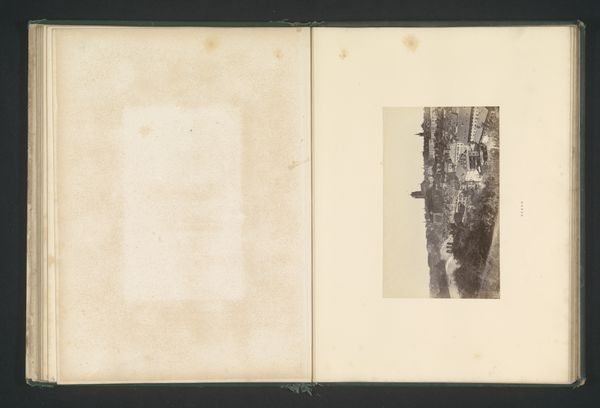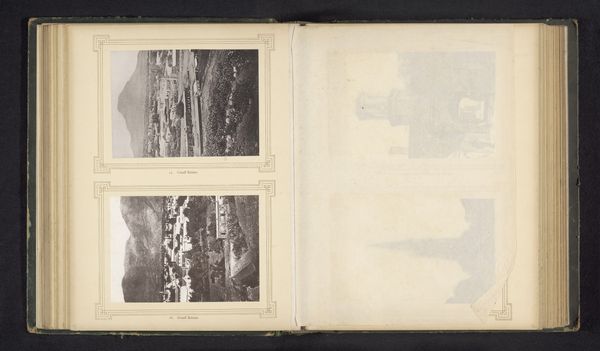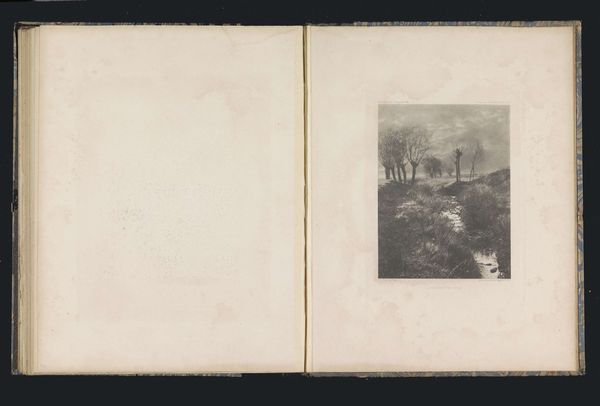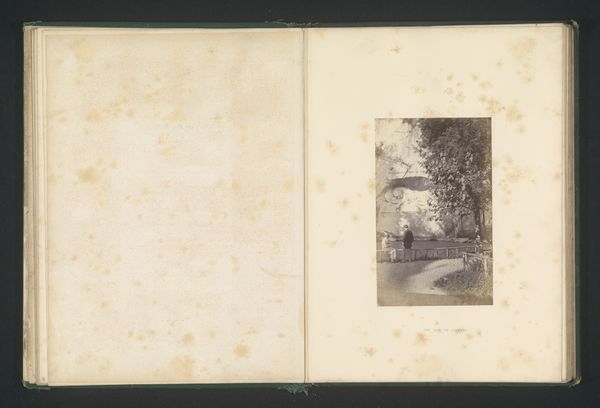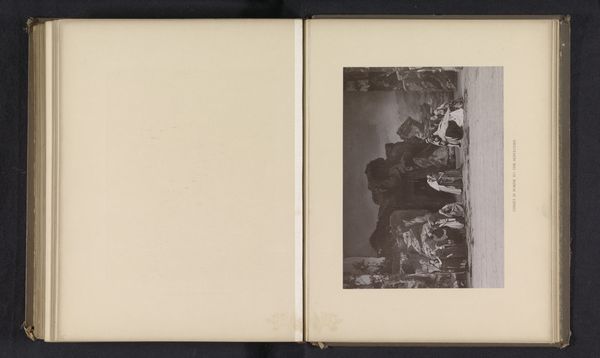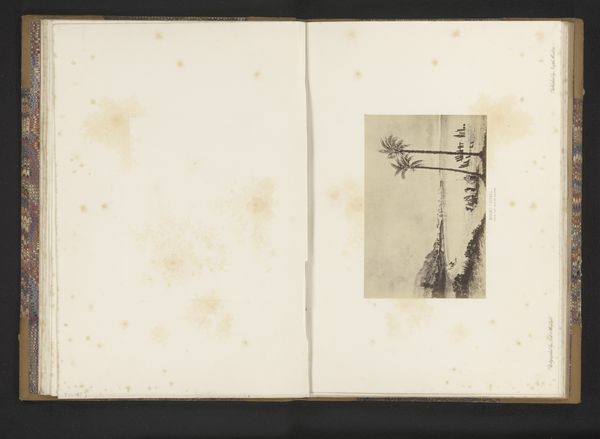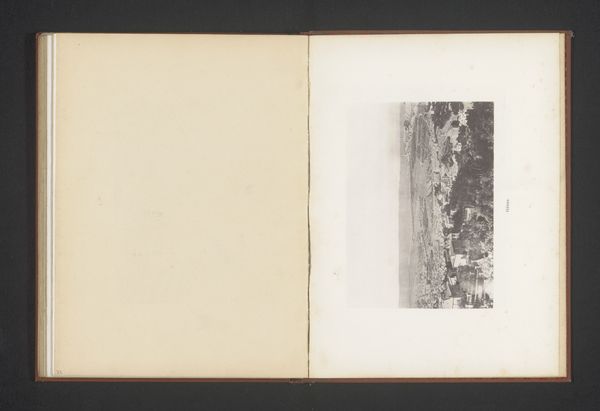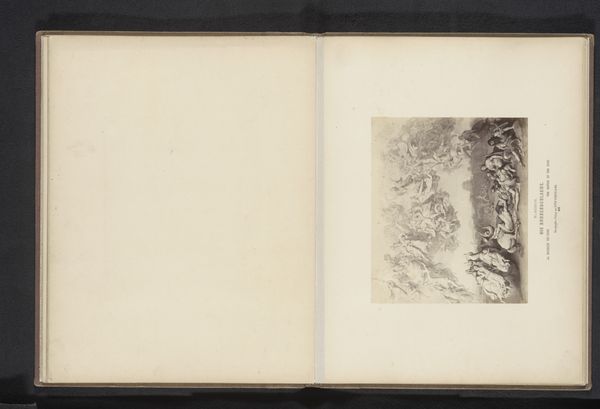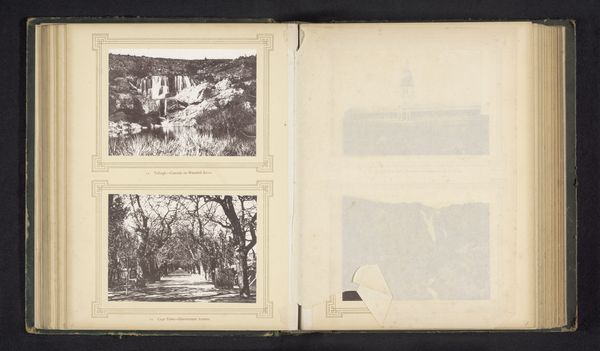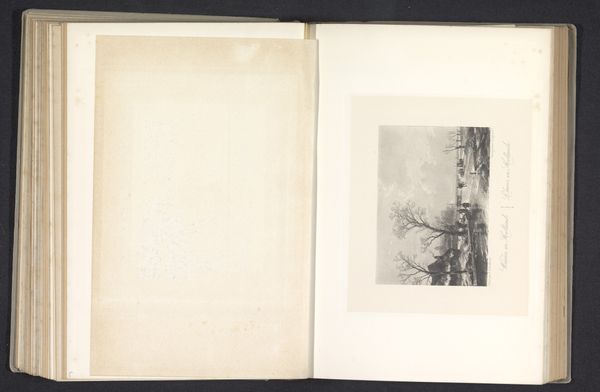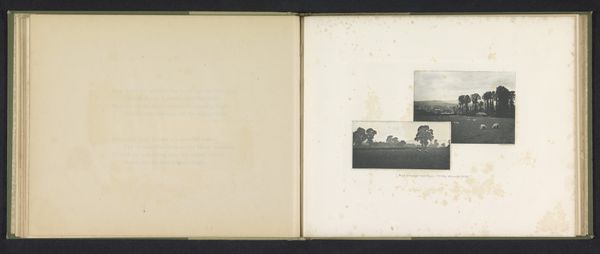
photography, gelatin-silver-print
#
landscape
#
photography
#
coloured pencil
#
gelatin-silver-print
#
cityscape
#
realism
Dimensions: height 112 mm, width 150 mm
Copyright: Rijks Museum: Open Domain
Editor: Here we have “View of a Church and a Cemetery in England,” a gelatin-silver print, made before 1891 by J.L. Williams. There’s a melancholy air to the composition, given the subject matter and muted tones. What resonates with you when you see this image? Curator: The symbols embedded here are powerful, aren’t they? Churches often represented stability and community, and of course, cemeteries speak to mortality and memory. Juxtaposing them creates a potent image about life's continuum. Do you think the artist intended a comforting or unsettling effect? Editor: I lean towards unsettling. The gray tones and somewhat obscured view contribute to a feeling of mystery, or maybe even unease. Is that consistent with how such images were typically viewed in the late 19th century? Curator: It is interesting you say that! Photography in that period was rapidly evolving, exploring how it could capture not just reality, but also emotional states. Churches were traditional subjects signifying continuity, but photographing cemeteries reflected growing social fascination with mourning and remembrance. It speaks to an interest in representing emotions and social rituals around death, making it a cultural mirror, right? Editor: That’s fascinating! So, this image encapsulates a moment of change in both art and society’s relationship with mortality? Curator: Precisely. It’s a blend of tradition and evolving perspectives, mirrored through a very modern medium for its time. It pushes the viewer to think not only about life, death, and their symbols but also to remember. Editor: I hadn't thought about the impact of the photographic medium itself. I’m leaving this photograph with a much richer understanding of its historical context. Thank you. Curator: And I feel refreshed by your reading of "unease"—it highlights how the symbolic power of imagery is never fixed, but reshaped across generations.
Comments
No comments
Be the first to comment and join the conversation on the ultimate creative platform.

